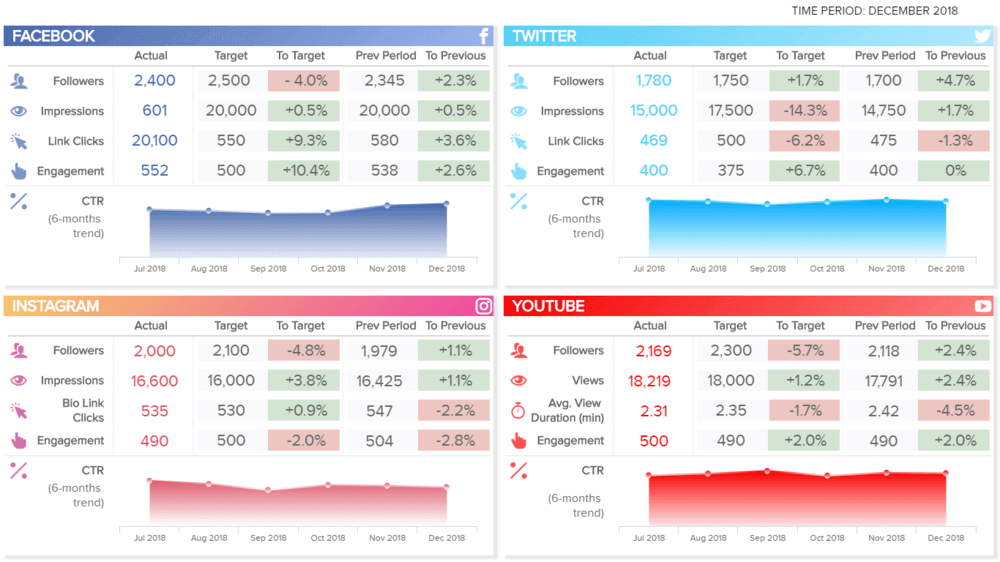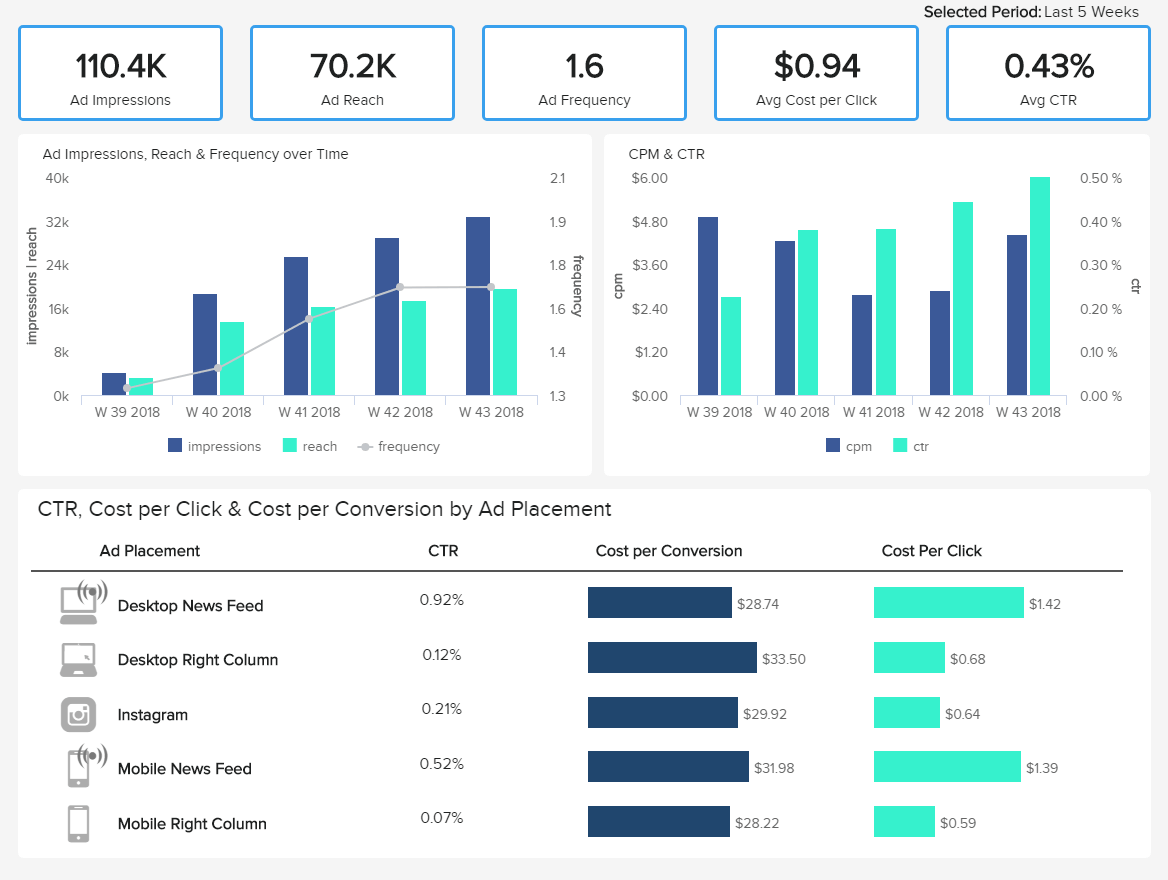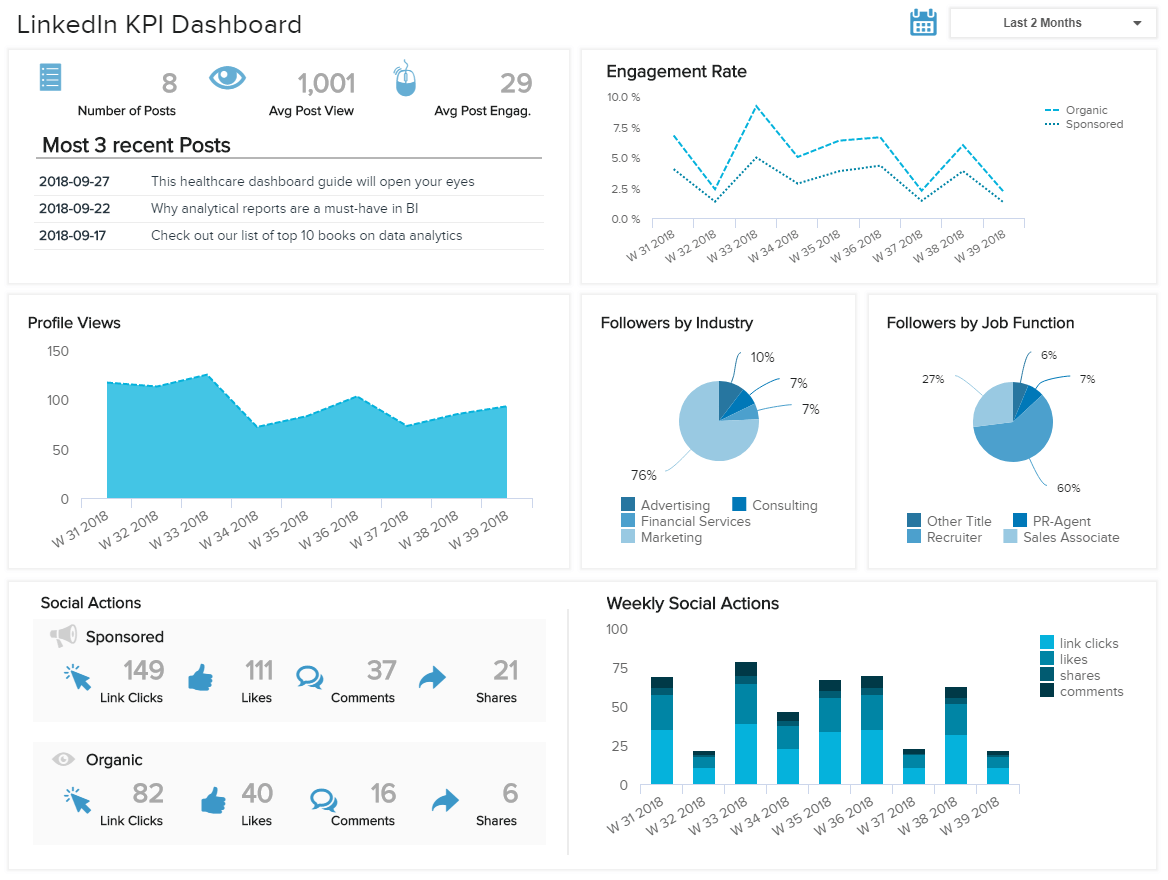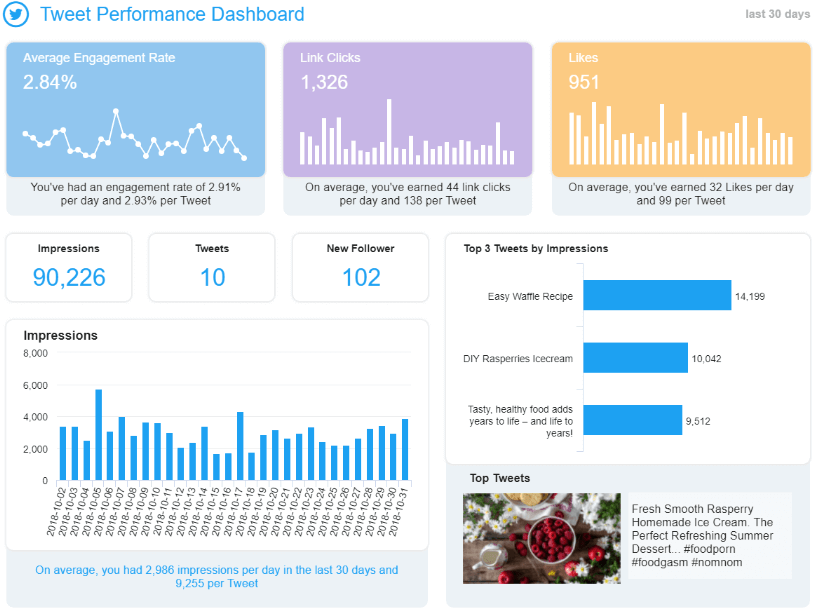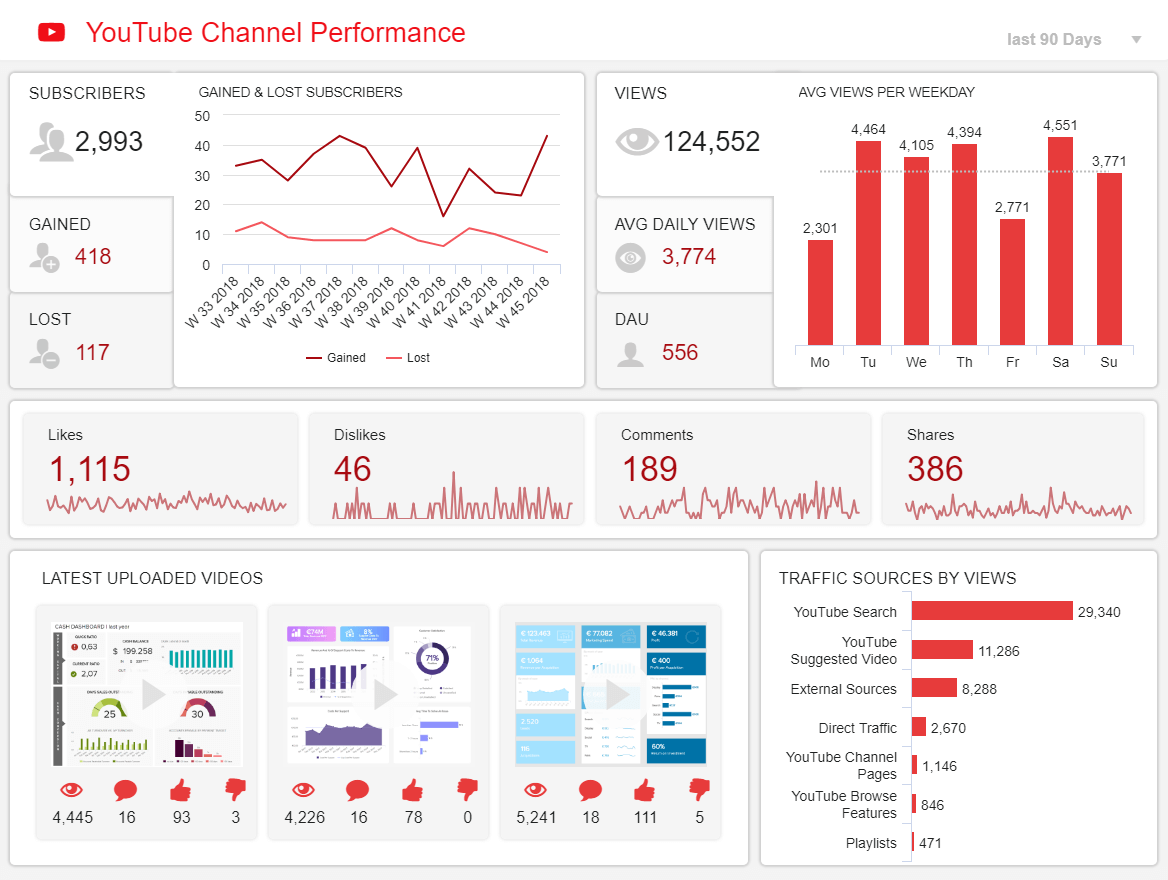Explore The Power & Potential Of Professional Social Media Dashboards
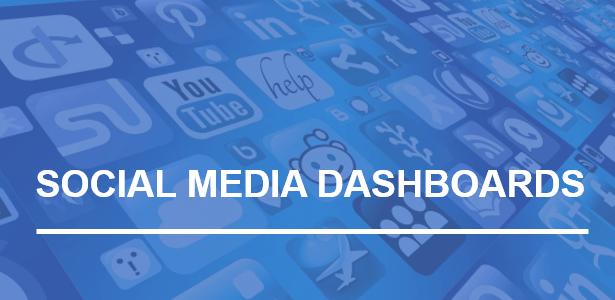
Table of Contents
1) What Is A Social Media Dashboard?
2) The Role Of Dashboards For Analytics
3) How To Create A Social Media Dashboard?
Gathering data and information from one or multiple platforms and creating a comprehensive social media dashboard is equally important as creating the social content itself. Social media has become one of the most important channels to engage with potential audiences, and that's not a surprise considering the power and potential of creating content to attract people, target the exact audience you need, and deliver value to your bottom line. Likes, comments, shares, reach, CTR, and conversions - all have become extremely significant to optimize and manage regularly in order to grow in our competitive digital environment.
You need to know how the audience responds, whether you need further adjustments, and how to gather accurate, real-time data. Here we will present a social media dashboard definition, a guide on how to create one, and finalize with social media dashboard templates at the end of the article.
We offer a 14-day trial. Benefit from professional social dashboards!
What Is A Social Media Dashboard?
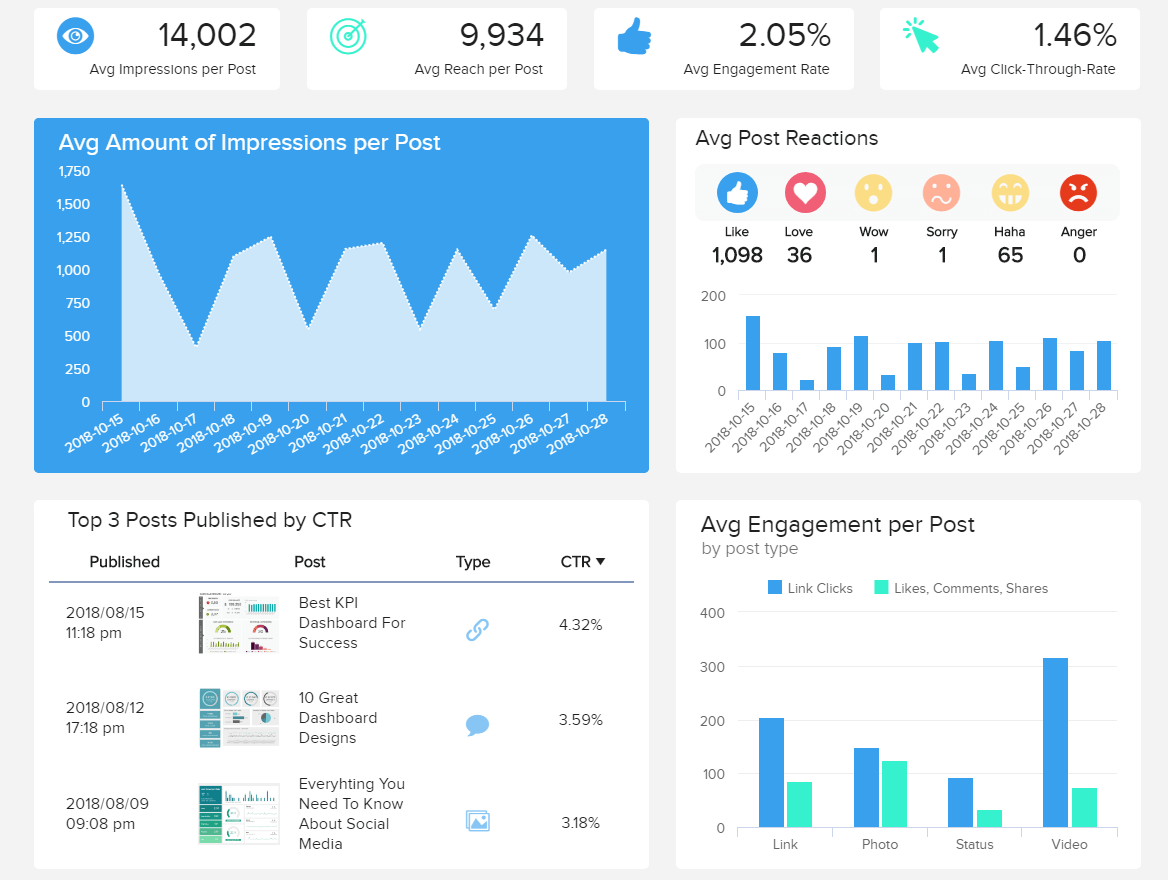

A social media dashboard is an invaluable management tool that is used by professionals, managers, and companies to gather, optimize, and visualize important metrics and data from social platforms such as Facebook, Twitter, LinkedIn, Instagram, YouTube, etc.
Such dashboards are usually created with a dashboard maker that makes things much more simple and effective since you don't have to manually update the data or create countless confusing spreadsheets. To keep putting the value of dashboards for social media analysis into perspective, we will now look at how these tools have revolutionized the way businesses deal with their social data.
The Role Of Dashboards For An Efficient Social Media Analytics Process
In short, SM dashboards are management systems that give businesses all the necessary tools to stay on top of their data. They are the best way to monitor your mentions, hashtags, clicks, comments, and any other interaction in real-time without having to actually check your accounts every few minutes. This approach allows businesses to save time that can be focused on generating targeted strategies to keep its audience engaged and interactive. Below are some of the other ways in which these tools can revolutionize the way you deal with your SM analytics process.
- Get a visual overview of performance: If you are using multiple social platforms to communicate and interact with your community, then it is very likely that you have been faced with the headache that comes from dealing with big amounts of information. That said, when that information is organized properly with the help of interactive visuals, the analytical experience becomes a lot more valuable and approachable. Modern business dashboard tools help you do just that, by providing a mix of interactive visualizations that portray your real-time performance. And not just that, the interactive nature of these tools allows you to drill down and explore your different charts and graphs to get deeper conclusions from your analysis.
- Monitor various campaigns altogether: Another great benefit that comes from implementing a social media dashboarding system into your organization is the centralized approach that comes with these tools. You don’t need to generate an infinite amount of dashboards to track the performance of your campaigns. Dashboards provide a centralized location to visualize how your strategies are developing across various platforms. By being able to interact and visualize all the important information in one place, you not only ensure you are making informed decisions but also avoid the tedious process of checking multiple accounts various times a day. You can even schedule content to be published and monitor the response in real-time to optimize any issues as soon as they arise.
- A collaborative approach to analytics: Rather you are an agency dealing with multiple clients or an internal SM team working for a big enterprise, collaboration is key when it comes to managing multiple social platforms and strategies. The online nature of dashboards allows its users to easily share relevant information with stakeholders in a matter of seconds. This enables teams to divide responsibilities and manage upcoming strategies and posts efficiently. And it also allows agencies to keep their clients informed about any latest developments without the need to hold infinite meetings.
- Save time and money: As mentioned throughout this post, dashboards provide businesses with an interactive and automated way to approach their social media reporting. Traditional reports are often generated with tools such as PowerPoint or Excel, and while these tools prove to be functional for that purpose, they also produce static reports that don’t go along with the fast-paced nature needed in today’s business context. By the time a report is done on a beautiful PPT, the information on it might already be outdated which delays the decision-making process. This is why social media dashboard analytics prove to be so useful. The real-time nature of these tools paired with the fact that you can easily automate them, allows you to stay on top of any new developments while saving time and money on creating static reports.
Now we will take a closer look at how to create a social KPI media dashboard and what important things you should keep in mind.
We offer a 14-day trial. Benefit from professional social dashboards!
How To Create A Social Media Dashboard?


To make the most out of your social media dashboards, you need to have an established process before you generate reports and utilize your online data visualization. In that regard, you need to consider certain points that will help you optimize your analysis and create a seamless process of consolidating your data and generating actionable insights. Let's take a look at this process in more detail.
1. Set your social media goals
To create a comprehensive social network dashboard, you need to establish your goals and objectives. It makes sense to use the SMART methodology to keep it specific, measurable, attainable, realistic, and timely. You need to identify what kind of goals you want to achieve and how to get there with the resources you have. Is your goal to attain a higher number of followers, visits to the website, or increased engagement? If you get into details, you will know what kind of metrics you need to accompany your analysis.
2. Bring everything into a central place
First and foremost, integrating data into a single point of access to create stunning visuals should be on top of your list since you probably need to consolidate information from multiple platforms and create a seamless online data analysis process. That will enable you to quickly access advanced analysis and generate a social media analytics dashboard swiftly and without the need to use traditional means of static reporting such as spreadsheets or presentations.
When connecting your social media accounts through a modern dashboard tool, you need to take into account the data integration and connection process. Whereas static spreadsheets can deliver some value in your analysis, they cannot enable you to connect multiple platforms at once and visualize insights in real-time. With modern tools, you have the opportunity to connect all your social media sources in a single place, without the need of setting up complex ETL processes or perform tedious preparations. Especially in the SaaS space, you can simply connect to a remote warehouse and merge, edit, or add all social networks in one place with the help of data connectors and APIs. That way, you can customize your analysis without restrictions and react to social changes as soon as they happen.
3. Choose the right social KPIs
Once your goals and data are in the right place, you need to start thinking about the metrics, as mentioned earlier. While there are numerous operational metrics as well as strategic ones, you need to think through them and choose wisely. What kind of social media KPIs will you choose completely depends on the goals you have established. If you want to focus on advertisements on social media, then metrics such as the CPC and CTR should be included in your dashboard for social media. If, on the other hand, you focus on community management, then "social currencies" such as likes, comments, replies, or shares might be a good starting point.
4. Utilize professional social media dashboard software
Professional software will only help you in saving countless hours of endless analysis that you would, otherwise, have to do manually with traditional spreadsheets, as we mentioned earlier. And while there are many options on the market, only a fraction will provide you with advanced features that will actually bring business value.
By utilizing professional social media dashboard software, you will have the opportunity to automate your dashboards and reports, share them with a few clicks, and access insights in real-time, which is extremely critical in a fast-paced environment such as social networks.
5. Finally, start creating
When you have all your goals and information in the right place, your next step involves the creation itself. Here you might want to consider what kind of chart you want to use, whether you need to respect your brand colors, or even optimize for mobile devices. To help you on your way, you can read our extensive guide on how to create a dashboard.
To see our points in practice and real business scenarios, we dedicate our next section to social media analytics dashboard templates, focused on 4 valuable channels: Facebook, LinkedIn, Twitter, and YouTube.
Social Media Dashboard Templates & Examples
It is clear that creating a social media management dashboard requires certain preparation and research. After you are done with the steps we have described above, it's time to generate a dashboard. That said, here we will present templates you can use for your own inspiration and analysis.
1. Social media KPI scorecard
As we mentioned how important is to bring all social media data under a single point of access, a social media KPI scorecard is a fantastic example that shows multiple channels and multiple KPIs.
**click to enlarge**
In the example above, we can see how Facebook, Twitter, Instagram, and YouTube perform against set goals but let's dig deeper into the visual. Metrics such as followers, impressions, link clicks, engagement, and CTR are analyzed according to actual performance and target. Continuing the analysis, we can see how the channel performs against set targets, compare it to the previous period, and, in the final row, expression in percentage. A clear overview of the CTR over a 6-month period provides more details about the development and enables us to spot immediately if there are significant spikes.
Such a dashboard gives us the opportunity to consolidate the most important social channels into a single scorecard, enabling us to immediately notice if there are signals that tell us to adjust our strategies or if everything is under control.
2. Social media ad dashboard for Facebook
Our second template comes from one of the most popular social networks in the world. With more than 2.70 billion monthly users, this network is oftentimes one of the top channels when creating a social media strategy, especially concerning ads. Facebook advertisers have a demanding task of continuous optimization of campaigns, and here we deliver a social media analytics dashboard template that can help achieve better Facebook results.
**click to enlarge**
As you can see in our Facebook dashboard above, a quick overview of impressions, reach, frequency, CPC, and the average CTR is shown at the top of this social media marketing dashboard. Below these metrics, you can see a more detailed visualization of each metric, critical for understanding what works and what needs further adjustments. By customizing the time frame, and setting up custom alerts, ad optimization and performance don't need to be tedious anymore.
We offer a 14-day trial. Benefit from professional social dashboards!
3. LinkedIn KPI dashboard
Our third social media reporting dashboard shows the business side of networking online. LinkedIn is one of the most prominent networks for developing business contacts, and by reaching over 700 million members, it's certainly one of the networks that you should keep on your radar.
**click to enlarge**
This LinkedIn dashboard example above shows essential metrics for a holistic overview of this social network, including relevant metrics such as the most recent posts, engagement rate, profile views, and social actions. On the right side, you can additionally spot followers by industry and job function as well as weekly social actions that will help you to optimize and upscale your LinkedIn strategy. Such a dashboard is extremely important if you want to tackle deeper into this business-oriented network and provide the most relevant content to your audience to ensure positive social media development.
4. Twitter Performance Dashboard
Moving on with our list of social media dashboard examples we have Twitter. Even though its been there for decades and has fallen behind other platforms such as TikTok, Instagram, and even Facebook, this platform keeps growing its loyal audience of 396,5 million users across the globe. In fact, Twitter has seen a 35% year-over-year increase in global ad engagement, making it a valuable platform for brands.
**click to enlarge**
With all that in mind, a valuable Twitter dashboard like the one above can serve as the perfect tool for brands who want to succeed on this platform. With metrics mostly related to interactions and engagement, users can extract valuable insights to optimize their strategies and get to know their audience on a deeper level.
5. YouTube Channel Performance
YouTube is another great platform used by businesses for their social media efforts. In fact, video content is increasingly growing its popularity. Studies have shown that 72% of customers say they’d rather learn about a product via video. Paired to 79% that admit they’ve been persuaded to buy a product or download software by watching a video about it. Taking all that into account, optimizing your video content with the help of a modern YouTube dashboard is invaluable.
**click to enlarge**
Breaking down this social media engagement dashboard a little bit, it provides detailed insights regarding your YouTube channel’s performance. With metrics regarding subscribers, interactions, most liked videos, and traffic sources, businesses can easily understand what type of content their audience enjoys the most and optimize their efforts accordingly.
Top 5 Social Media Dashboard Tools Features
So far, we’ve covered a definition, some benefits, steps to follow when creating a social media metrics dashboard, and some examples for different channels. Now you might be wondering, how do I make all of this happen for my own business or agency? That’s actually the easiest part, and it is done with the help of modern social media dashboard tools. To put the power of these solutions into perspective, here we will list the top 5 features you should expect to get from them.
- Real-time access: As we’ve mentioned various times throughout this guide, one of the greatest benefits you can reap from using modern dashboards for your SM analysis efforts is access to real-time data. Social media channels never sleep, and businesses that want to use data to their advantage need to act on any new developments as soon as they occur if they want to beat competitors. For that reason, real-time analytics is an invaluable feature that any dashboarding tool worth its salt should include. This is possible due to the fact that these solutions offer easy integration, meaning you can connect any data source you need in a matter of seconds and the tool will update the information automatically with no need for any manual intervention.
- Various chart types: Visuals make the analytical process easier for the average user by providing an accessible and understandable approach to data. That said, when using visualizations it is important to use the appropriate one for your analysis purpose. A well-developed dashboard software will offer you a wide range of chart types so you can visualize your most important KPIs in the correct way. This is a fundamental feature to have as the charts and graphs you choose will directly influence the quality of the end product, your dashboard. Some software also offers advanced charting options such as the possibility to add a secondary axis or combine multiple chart types into one.
- Drag and drop feature: In this data-driven era that we live in, analytical processes are no longer segregated to IT professionals or scientists. On the contrary, with the rise of modern dashboarding solutions, the analysis doors have been opened to a wider audience thanks to features such as a drag-and-drop interface. Essentially, this feature allows users to easily query and visualize information without writing a single line of code. All you need to do is select the needed fields from your databases and drag them into the y and x-axis boxes and you will have a stunning chart in a matter of seconds.
- Sharing capabilities: As we said in a previous point, collaboration is key when it comes to social media analysis. That being said, modern online dashboard tools offer multiple sharing features to boost collaboration. Some of these options include sharing your dashboards via a live link that can be password protected, sending customizable email reports that can be automated, as well as online access via a mobile app or any other device with an internet connection. Some tools also include the possibility to export your dashboards into a PDF or PNG format and print them to use as support material for meetings with clients or team members.
- White-labeling & embedding options: This last feature is especially valuable for agencies that work with multiple clients and want to provide them with an excellent reporting experience. On one side, a white labeling feature allows them to customize their social media management dashboards with the colors, logo, and font of the company for an extra professional look. And on the other hand, embedding technologies allow agencies to embed dashboards into their own application, intranet, or website to get all the features and benefits of a complete solution without the need to invest in one of their own. This proves to be a very successful practice when it comes to client reporting, especially when you deal with multiple accounts and don’t have time to constantly update all of them.
These are just a few of the various capabilities offered by professional social media dashboard tools. If you want to see more, then take a look at our complete guide on dashboard software features!
We offer a 14-day trial. Benefit from professional social dashboards!
A Short Summary
We have explained what is a social media dashboard, provided steps and tips on how to create one, and introduced examples that can help you in developing your own social media strategy.
Now it's your time to shine! Try datapine for a 14-day trial and start creating your own advanced social media dashboards!
